 W
WHistorians who debate the origins of the American Civil War focus on the reasons that seven Southern states declared their secession from the United States and united to form the Confederate States, and the reasons that the North refused to let them go. Proponents of the pseudo-historical Lost Cause ideology have denied that slavery was the principal cause of the secession. While historians in the 21st century agree on the centrality of the conflict over slavery—it was not just "a cause" of the war but "the cause"—they disagree sharply on the aspects of this conflict that were most important.
 W
WThe 1860 United States presidential election was the 19th quadrennial presidential election, held on November 6, 1860. In a four-way contest, the Republican Party ticket of Abraham Lincoln and Hannibal Hamlin, absent from the ballot in ten slave states, won a national popular plurality, a popular majority in the North where states already had abolished slavery, and a national electoral majority comprising only Northern electoral votes. Lincoln's election thus served as the main catalyst of the American Civil War.
 W
WAbolitionism in the United States was a movement which sought to end gradually or immediately slavery in the United States. It was active from the late colonial era until the American Civil War, which brought the abolition of American slavery through the Thirteenth Amendment to the United States Constitution. The anti-slavery movement originated during the Age of Enlightenment, focused on ending the trans-Atlantic slave trade. In Colonial America, a few German Quakers issued the 1688 Germantown Quaker Petition Against Slavery, which marks the beginning of the American abolitionist movement. Before the Revolutionary War, evangelical colonists were the primary advocates for the opposition to slavery and the slave trade, doing so on humanitarian grounds. James Oglethorpe, the English owner of the colony of Georgia, originally tried to prohibit slavery upon its founding, a decision which was eventually reversed.
 W
WAmerican Slavery as It Is: Testimony of a Thousand Witnesses is a book written by the American abolitionist Theodore Dwight Weld, his wife Angelina Grimké, and her sister Sarah Grimké, which was published in 1839.
 W
WBleeding Kansas, Bloody Kansas, or the Border War was a series of violent civil confrontations in Kansas Territory, and to a lesser extent in western Missouri, between 1854 and 1859. It emerged from a political and ideological debate over the legality of slavery in the proposed state of Kansas.
 W
WJohn Brown was an American abolitionist leader. First reaching national prominence for his radical abolitionism and fighting in Bleeding Kansas, he was eventually captured and executed for a failed incitement of a slave rebellion at Harpers Ferry preceding the American Civil War. A man of strong religious convictions, Brown believed he was "an instrument of God", raised up to strike the death blow to American slavery, a "sacred obligation". Brown was the leading exponent of violence in the American abolitionist movement: he believed that violence was necessary to end American slavery, since decades of peaceful efforts had failed. Brown said repeatedly that in working to free the enslaved he was following the Golden Rule, as well as the U.S. Declaration of Independence, which states that "all men are created equal".
 W
WAnthony Burns was a fugitive slave whose capture and trial in Boston, and transport back to Virginia, generated wide-scale public outrage in the North and, ultimately, increased opposition to slavery by Northerners.
 W
WJohn Caldwell Calhoun was an American statesman and political theorist from South Carolina who held many important positions including being the seventh vice president of the United States from 1825 to 1832, while adamantly defending slavery and protecting the interests of the white South. He began his political career as a nationalist, modernizer, and proponent of a strong national government and protective tariffs. In the late 1820s, his views changed radically, and he became a leading proponent of states' rights, limited government, nullification, and opposition to high tariffs. He saw Northern acceptance of those policies as a condition of the South remaining in the Union. His beliefs and warnings heavily influenced the South's secession from the Union in 1860–1861.
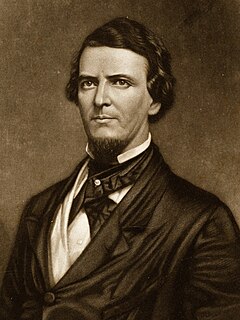 W
WThe Beating of Charles Sumner, or the Brooks–Sumner Affair, occurred on May 22, 1856, in the United States Senate chamber, when Representative Preston Brooks, a pro-slavery Democrat from South Carolina, used a walking cane to attack Senator Charles Sumner, an abolitionist Republican from Massachusetts. The attack was in retaliation for a speech given by Sumner two days earlier in which he fiercely criticized slaveholders, including a relative of Brooks, Andrew Butler. The beating nearly killed Sumner and contributed significantly to the country's polarization over the issue of slavery. It has been considered symbolic of the "breakdown of reasoned discourse" and the use of violence that eventually led to the Civil War.
 W
WThe Christiana Riot, also known as Christiana Resistance, Christiana Tragedy, or Christiana incident, was the successful armed resistance by free Blacks and escaped slaves to a raid led by a federal marshal to recover four escaped slaves owned by Edward Gorsuch of Maryland. The raid took place in the early morning hours of September 11, 1851, at the house in Christiana, Pennsylvania, of William Parker, himself an escaped slave. This took place after the federal Fugitive Slave Act of 1850 increased penalties for assisting escaped slaves and required state government officials, even in free states such as Pennsylvania, to assist in the recapture of slaves.
 W
WThe Compromise of 1850 was a package of five separate bills passed by the United States Congress in September 1850 that defused a political confrontation between slave and free states on the status of territories acquired in the Mexican–American War. It also set Texas's western and northern borders and included provisions addressing fugitive slaves and the slave trade. The compromise was brokered by Whig senator Henry Clay and Democratic senator Stephen Douglas, with the support of President Millard Fillmore.
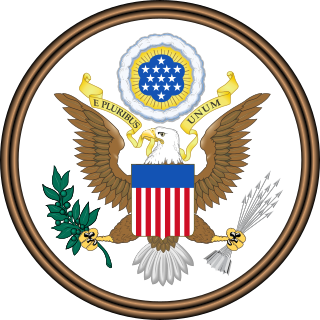 W
WThe Fugitive Slave Act or Fugitive Slave Law was passed by the United States Congress on September 18, 1850, as part of the Compromise of 1850 between Southern interests in slavery and Northern Free-Soilers.
 W
WJohn Brown's raid on Harpers Ferry was an effort by abolitionist John Brown, from October 16 to 18, 1859, to initiate a slave revolt in Southern states by taking over the United States arsenal at Harpers Ferry, Virginia. It has been called the dress rehearsal for, or Tragic Prelude to, the Civil War.
 W
WThe Kansas–Nebraska Act of 1854 was a territorial organic act that created the territories of Kansas and Nebraska. It was drafted by Democratic Senator Stephen A. Douglas, passed by the 33rd United States Congress, and signed into law by President Franklin Pierce. Douglas introduced the bill intending to open up new lands to development and facilitate the construction of a transcontinental railroad, but the Kansas–Nebraska Act is most notable for effectively repealing the Missouri Compromise, stoking national tensions over slavery, and contributing to a series of armed conflicts known as "Bleeding Kansas".
 W
WThe Lincoln–Douglas debates were a series of seven debates between Abraham Lincoln, the Republican Party candidate for the United States Senate from Illinois, and incumbent Senator Stephen Douglas, the Democratic Party candidate. Until the 17th Constitutional Amendment of 1913, senators were elected by their respective state legislatures, so Lincoln and Douglas were trying to win control of the Illinois General Assembly for their respective parties.
 W
WElijah Parish Lovejoy was an American Presbyterian minister, journalist, newspaper editor, and abolitionist. After having moved his newspaper from St. Louis, Missouri to Alton, Illinois, he was fatally shot during an attack by a pro-slavery mob. They were seeking to destroy a warehouse owned by Winthrop Sargent Gilman and Benjamin Godfrey, which held Lovejoy's press and abolitionist materials.
 W
WThe Missouri Compromise was United States federal legislation that stopped northern attempts to forever prohibit slavery's expansion by admitting Missouri as a slave state and Maine as a free state in exchange for legislation which prohibited slavery in the remaining Louisiana Purchase lands north of the 36°30′ parallel except for Missouri. The 16th United States Congress passed the legislation on March 3, 1820, and President James Monroe signed it on March 6, 1820.
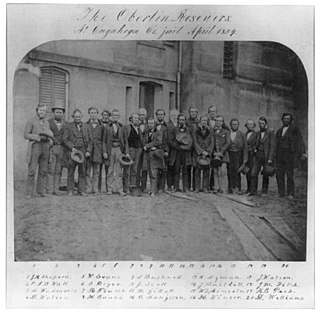 W
WThe Oberlin–Wellington Rescue of 1858 in was a key event in the history of abolitionism in the United States. A cause celèbre and widely publicized, thanks in part to the new telegraph, it is one of the series of events leading up to Civil War.
 W
WThe Ostend Manifesto, also known as the Ostend Circular, was a document written in 1854 that described the rationale for the United States to purchase Cuba from Spain while implying that the U.S. should declare war if Spain refused. Cuba's annexation had long been a goal of U.S. slaveholding expansionists. At the national level, American leaders had been satisfied to have the island remain in weak Spanish hands so long as it did not pass to a stronger power such as Britain or France. The Ostend Manifesto proposed a shift in foreign policy, justifying the use of force to seize Cuba in the name of national security. It resulted from debates over slavery in the United States, manifest destiny, and the Monroe Doctrine, as slaveholders sought new territory for the expansion of slavery.
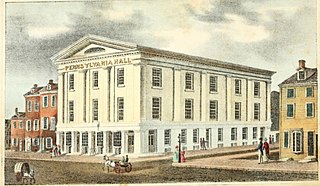 W
WPennsylvania Hall, "one of the most commodious and splendid buildings in the city," was an abolitionist venue in Philadelphia, Pennsylvania, built in 1837–38. It was a "Temple of Free Discussion", where antislavery, women's rights, and other reform lecturers could be heard. Four days after it opened it was destroyed by arson, the work of an anti-abolitionist mob. Except for the burning of the White House and the Capitol during the War of 1812, it was the worst case of arson in American history up to that date.
 W
WStar of the West was an American civilian steamship that was launched in 1852 and scuttled by Confederate forces in 1863. In January 1861, the ship was hired by the government of the United States to transport military supplies and reinforcements to the U.S. military garrison of Fort Sumter. A battery on Morris Island, South Carolina handled by cadets from the South Carolina Military Academy fired upon the ship, effectively the first shots fired in the American Civil War.
 W
WThe Battle of Fort Sumter was the bombardment of Fort Sumter near Charleston, South Carolina by the South Carolina militia, and the return gunfire and subsequent surrender by the United States Army, that started the American Civil War.
 W
WNathaniel Beverley Tucker was an American author, judge, legal scholar, and political essayist.
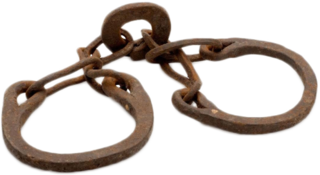 W
WUncle Tom's Cabin; or, Life Among the Lowly. is an anti-slavery novel by American author Harriet Beecher Stowe. Published in two volumes in 1852, the novel had a profound effect on attitudes toward African Americans and slavery in the U.S., and is said to have "helped lay the groundwork for the [American] Civil War."
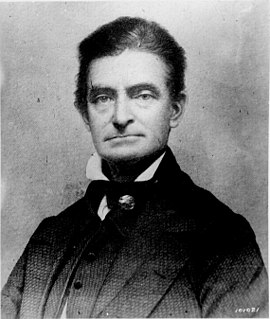 W
WVirginia v. John Brown was a criminal trial held in Charles Town, Virginia, in October of 1859. The abolitionist John Brown was quickly prosecuted for treason against the Commonwealth of Virginia, murder, and inciting a slave insurrection, all part of his raid on the United States federal arsenal at Harpers Ferry, Virginia. He was found guilty of all charges, sentenced to death, and was executed by hanging on December 2.
 W
WThe Wilmot Proviso was an unsuccessful 1846 proposal in the United States Congress to ban slavery in territory acquired from Mexico in the Mexican–American War. The conflict over the Wilmot Proviso was one of the major events leading to the American Civil War.